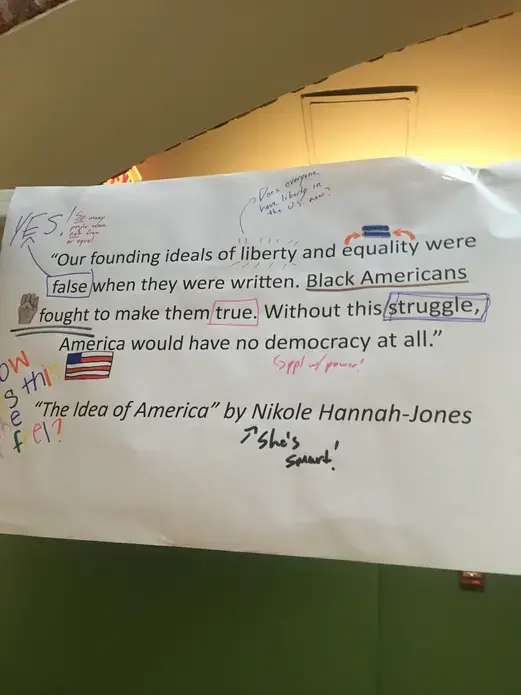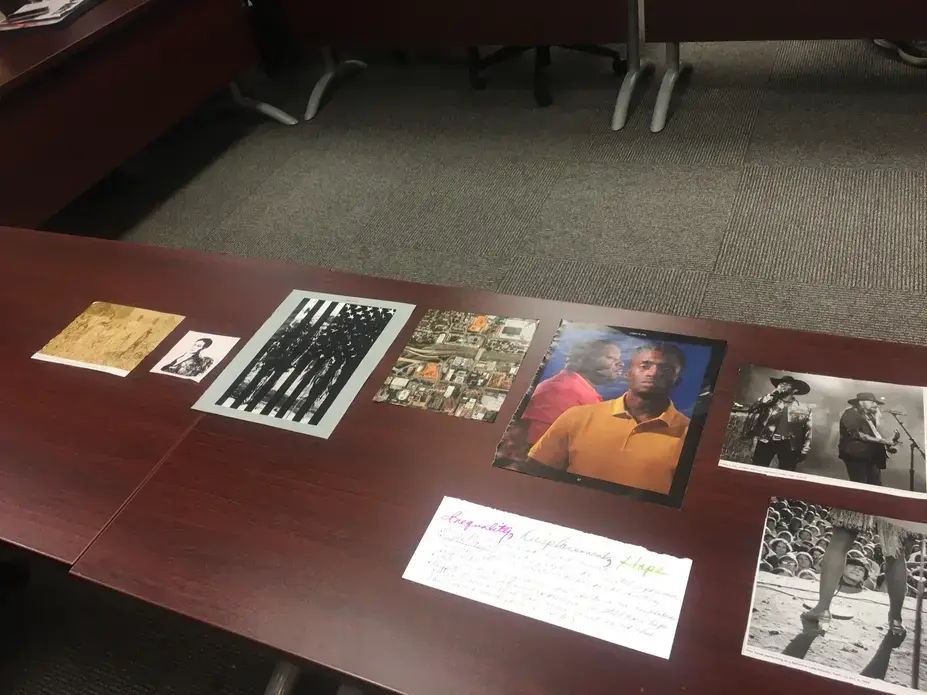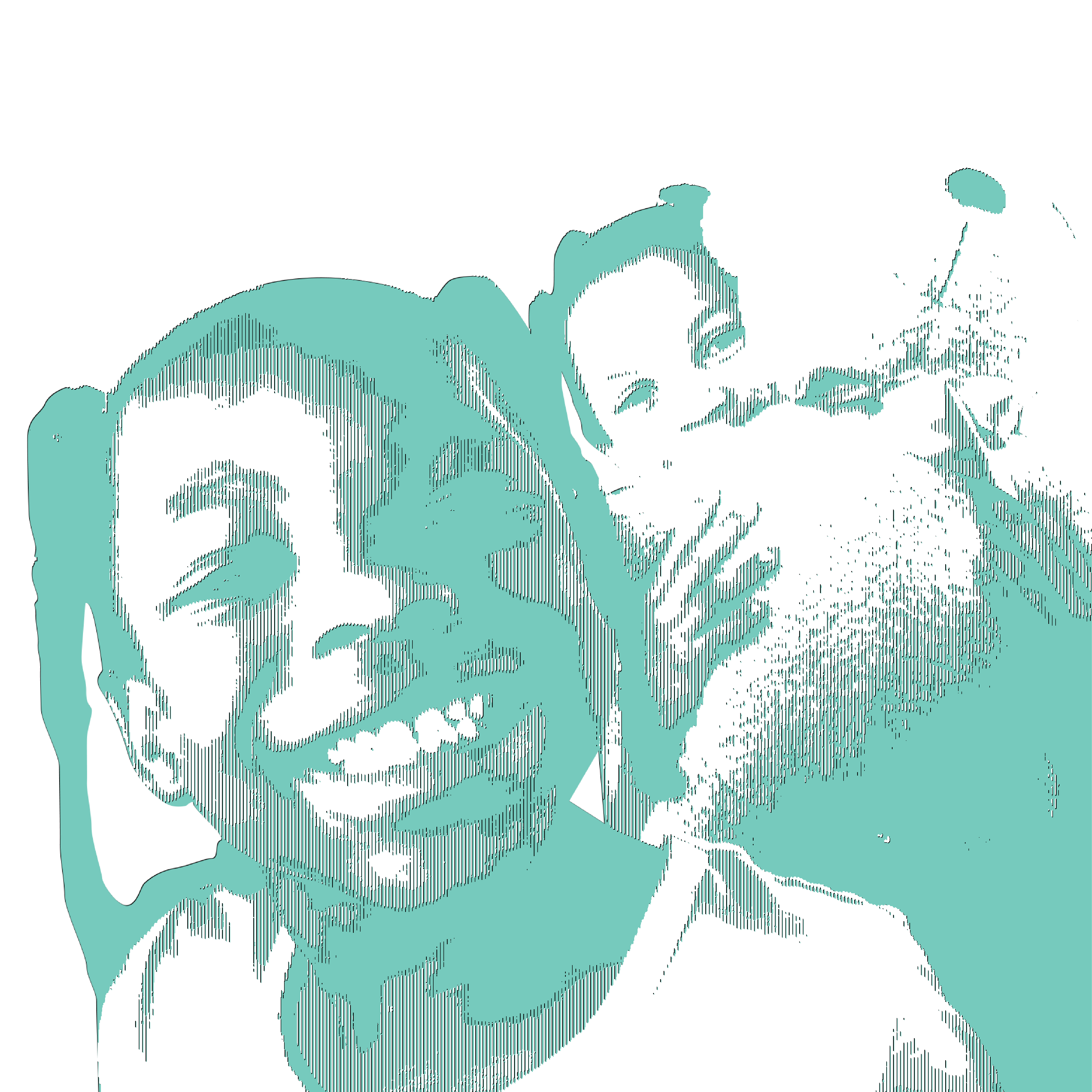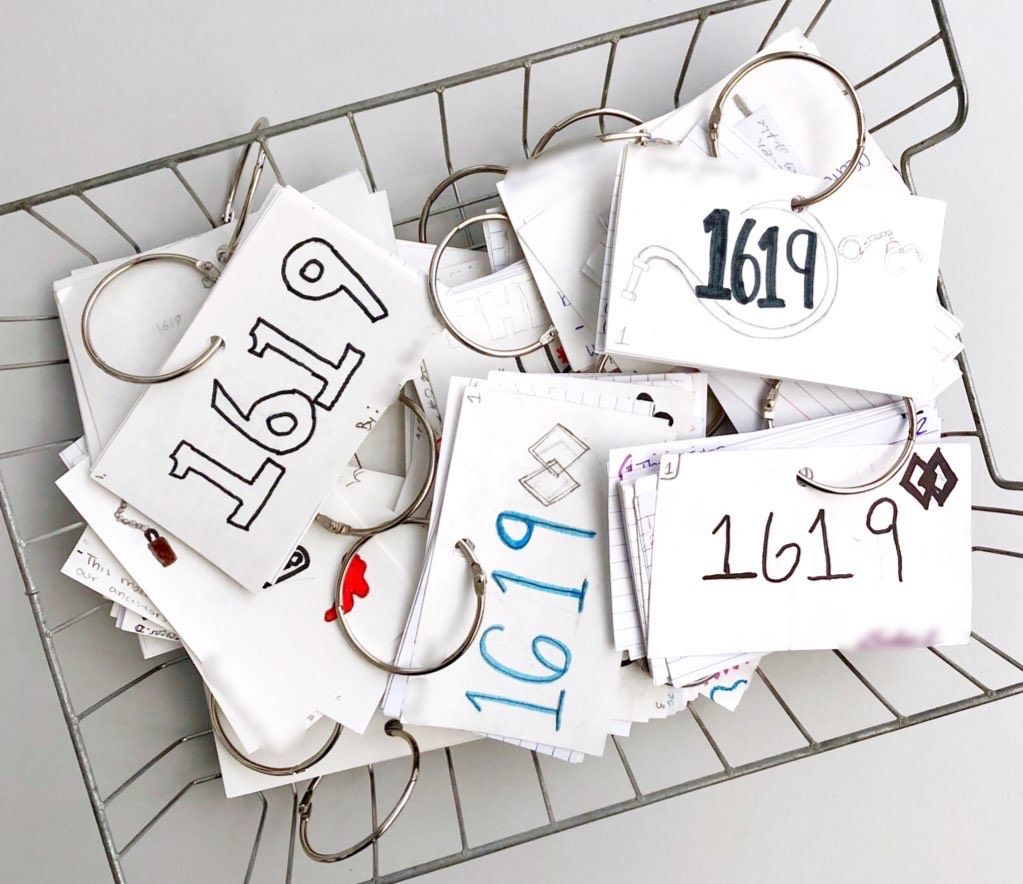
Just over one year ago, The New York Times Magazine published The 1619 Project. Comprising a full issue of the magazine, a broadsheet, and a five-episode podcast, it challenges readers to think about what it would mean to re-frame 1619, the year that enslaved Africans first landed in Virginia, as our nation’s foundational date. Made up of essays, poems, graphics, and visual art pieces, the project investigates and illustrates the ways in which the legacy of slavery contributes to modern American life.
Over the past school year, over 500 schools received copies of the issue dedicated to the project from the Pulitzer Center and The Times, and over 4,000 educators from all 50 states have used one or more resources in our 1619 Project curriculum. In addition, educators all over the country have devised their own lessons, activities, and ways of using The 1619 Project as a teaching tool.
“As soon as I saw The 1619 Project, I was like, ‘I must have that for my kids,’” said S. Renee Summers, AP literature teacher at Loveless Academic Magnet Program High School in Montgomery, Alabama. “I can’t overstate how meaningful it was for them to have the paper copies in front of them, they brought them to school every day and I would watch them turning the pages engrossed in what they were reading.”
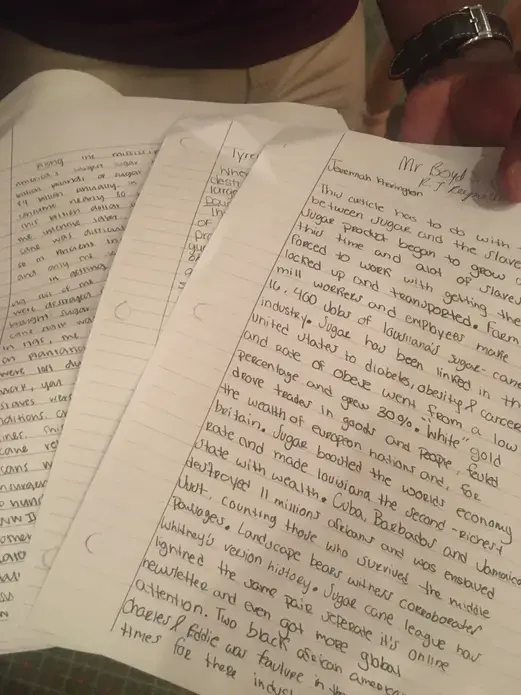
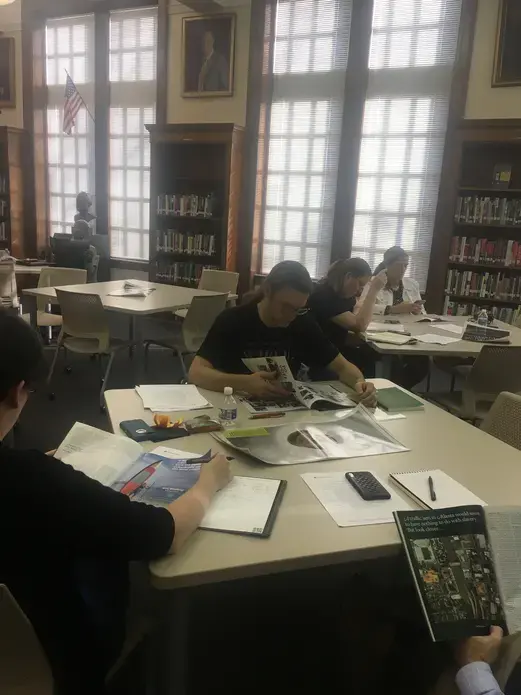
The Pulitzer Center’s education team spent the summer reaching out to educators all over the country to learn how they have used The 1619 Project in their classrooms, as well as what insights they can offer to educators who are considering doing the same. What follows in this resource is a compilation of warm-up exercises, activities that guide students’ engagement with reporting from The 1619 Project, and extension projects that students used to process and share what they learned by engaging with the project. The activities below were designed and facilitated by educators from nine schools as part of the 2019-2020 school year. They have kindly consented to share their ideas, insights, and their students’ work so that others can find inspiration and insight.
Warm-up activities to prepare for exploring The 1619 Project:
-
Guiding Discussion with Highlighted Quotes, Inspired by Brad Lakritz, James Denman Middle School (San Francisco, California)
-
Background: Lakritz teaches social science and current-events classes at James Denman Middle School in San Francisco. Before sharing full essays with students, Lakritz previewed the essays in The 1619 Project and documented key quotes from each article.
-
Instructions:
-
Review essays that you are interested in sharing with students and highlight quotes that capture key themes from the essay.
-
Present the quotes you identified for students, and use those quotes to guide a discussion about the themes of the text.
-
Use these discussions to begin introducing context that students will need to understand the essays. Then, provide the text to students who want to read more.
-
-
Tip: Quotes from each essay in the magazine for The 1619 Project can be found here.
-
-
Quote Mingle, Inspired by Lori Beza, Schenectady High School (Albany, New York)
-
Background: Beza designed the following exercise for educators participating in a professional development workshop.
-
Instructions:
-
Print and separate these quotes from the opening essay from The 1619 Project by Nikole Hannah-Jones.
-
Share one quote with each participant, and then give participants the following instructions:
-
Read your quote from the article.
-
Predict: What do you think the article is about?
-
Wonder: What is a question you have about the article?
-
-
When instructed to do so, participants will find a partner or small group. Once participants are partnered or in small groups, give them the following instructions:
-
Take turns reading your assigned quotes to another.
-
Give the meaning of your quote in your own words.
-
Tell your partner, or group, what you think the article is about.
-
Tell your partner, or group, the question you have.
-
Change roles.
-
-
Have participants repeat step iii two or three more times.
-
Gather participants and let them know that they are all looking at quotes from the same article.
-
Ask participants to share what they think the article is about with the full group. Create a bulleted list of participants’ responses in a place that everyone can see.
-
Ask participants to share what questions they have about the article. Create a bulleted list of participants’ responses in a place that everyone can see.
-
-
-
Ways to adapt this activity:
-
The activity was later adapted by Pulitzer Center staff and educator partners for workshops with high school educators in D.C. and community members in Houston, Texas, to include quotes from all 18 essays in the magazine resource from The 1619 Project. The quotes were pulled from the Pulitzer Center’s reading guide.
-
-
-
Sparking Curiosity with Images, Inspired by Rebecca McKnight,Winston-Salem/Forsyth County Public Schools (Winston-Salem, North Carolina)
-
Background: McKnight led professional development workshops in fall 2019 for educators who were planning to share The 1619 Project with their students. Upon completion of the workshop, educators received class sets of the magazine for their students.
-
Instructions:
-
Print a copy of the broadsheet from The 1619 Project.
-
Cut out the pictures from The 1619 Project's broadsheet resource and laminate the images.
-
Display the images for participants. Allow them to scan all images, or assign an image to each participant. Once participants have selected one image, use the following prompts to guide a conversation about the themes from The 1619 Project:
-
See/Think/Wonder
-
Ask participants what they see. Then, ask them to make predictions about what they are seeing in the image. Ask: What is it? What is it used for? Why? What does it represent to you? Finally, guide participants in asking questions about their images.
-
-
Connect/Extend/Challenge (Here is a template for this framework from Facing History.)
-
Ask participants to identify connections between what they are seeing in the image, and things they have seen before.
-
Ask participants to consider what feels new or unfamiliar about what they are seeing in the image. What new information are they learning? What do they want to know?
-
What new questions do participants have after viewing this image?
-
-
Tip: Review images before sharing and identify which images may be inappropriate and/or challenging for students. Preview and plan before sharing images with students.
-
Tip: Pulitzer Center education staff adapted this activity by printing and sharing images from The 1619 Project’s magazine. They then guided participants in creating gallery exhibitions of three-five images that capture a theme from the project. Click here for instructions on teaching exhibition curation to students.
-
-
-
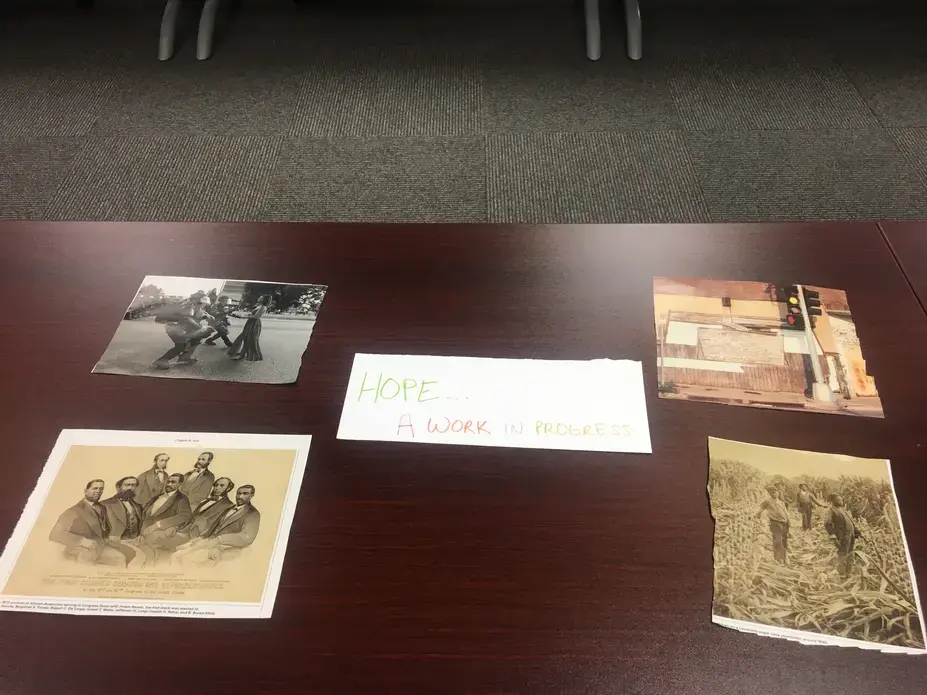
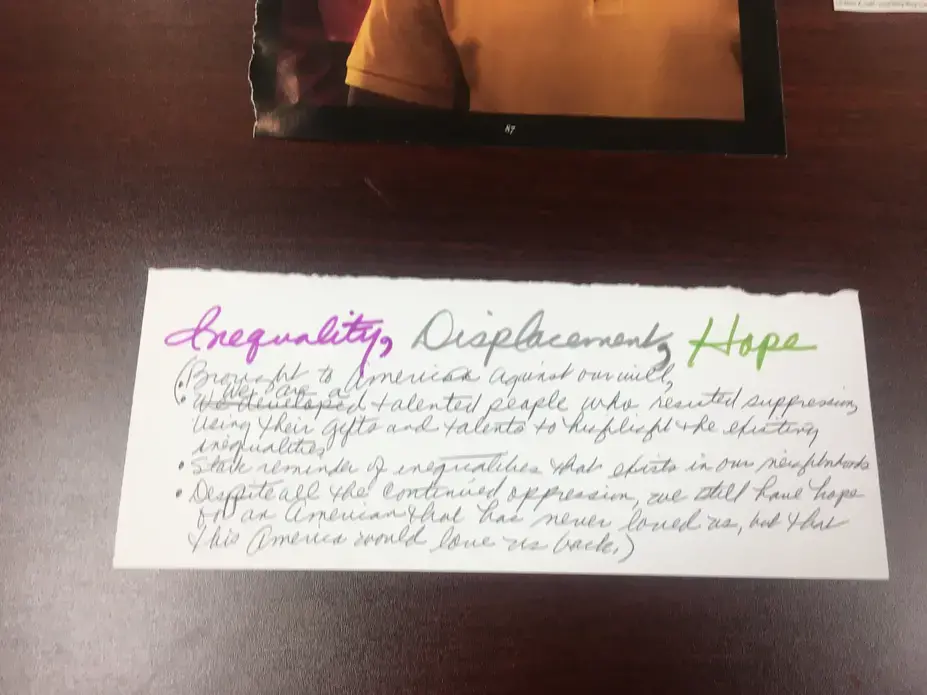
Connecting The 1619 Project to Non-Fiction, Fiction, and Poetry:
-
The 1619 Project as a Companion Resource to History Textbooks: Inspired by Jeanette Jones, The Pembroke Hill School (Kansas City, Missouri)
-
Background: Jones is a Black U.S. history teacher at The Pembroke Hill School, a private school that Jones calls a PWI, or “predominantly white institution.” She leads a writing and discussion-based course, where students “reflect on what we think history is. Then, we add aspects of The 1619 Project and contrast that with what the textbook shows,” she said. “When I teach [The 1619 Project], it’s never about telling the students something—it’s about collectively deciding what we should learn.” In her 11th-grade class, students use primary and secondary sources (including a textbook and other resources like The 1619 Project) to study and discuss U.S. history.
-
Instructions:
-
Using an online discussion board platform, assign students weekly homework in which they must write a reaction to the week’s material or chapter in their textbooks.
-
In their reflections, students must connect the textbook’s material to material from another primary or secondary source (such as The 1619 Project).
-
This way, students are encouraged to reflect on the differences in the narratives and history taught between multiple sources.
-
-
-
-
The 1619 Project as a Companion Resource to “I, Too, Sing America” by Langston Hughes: Inspired by Adrienne Glasgow, Paul C. Dunbar High School (Washington, D.C.)
-
Background: Glasgow collaborated with social studies colleagues throughout D.C. Public Schools to create a guide for how essays from The 1619 Project support eighth and 11th-grade U.S. history standards. Glasgow connected her students to several essays from the project, and collaborated with two students on a moderated panel with Nikole Hannah-Jones for Dunbar students in October 2019.
-
Instructions:
-
Guide students in reading the following texts:
-
“I, Too, Sing America” by Langston Hughes
-
“Our democracy’s founding ideals were false when they were written. Black Americans have fought to make them true.” by Nikole Hannah-Jones
-
-
Guide students in responding to the following questions:
-
In your own words, what is each text saying?
-
What questions do these texts and their content raise for you? What reactions do you have to them, either individually or together?
-
How does reading the two together make you see or understand things you might not if you read them separately?
-
If the creators or subjects of these texts were to have a conversation, what is one thing they might say to each other?
-
-
Tip: For support in engaging students in the essay by Nikole Hannah-Jones for The 1619 Project, try this lesson plan.
-
-
-
The 1619 Project as a Companion Resource to Support Analysis of The Declaration of Independence and the Song Black America Again by rapper Common: Inspired by Tatum Weaver, Reid Ross Classical School (Fayetteville, North Carolina)
-
Background: Weaver connected her history classes to several essays from The 1619 Project while teaching U.S. history last year. This exercise describes how students engaged with the first essay from The 1619 Project’s magazine, “Our democracy’s founding ideals were false when they were written. Black Americans have fought to make them true,” which was written by Nikole Hannah-Jones.
-
Instructions:
-
Have the students listen to and review the lyrics of a song by Common called "Black America Again." Guide students in a reflection about the song that highlights their feelings, thoughts on the lyrics, and how they think the song relates to issues they see in their community and country.
-
Read and analyze the Declaration of Independence.
-
Read the article, “Our democracy’s founding ideals were false when they were written. Black Americans have fought to make them true,” which was written by Nikole Hannah-Jones. A note from Weaver: “I don't give questions in the middle of this one, it is long but it is easy to read, emotionally compelling, and resonates with the students so they usually don't need questions to keep them interested.”
-
Use a Socratic seminar or a virtual discussion board to lead a discussion that challenges students to apply details and analysis of these three texts. The guiding question for the discussion is, “Has America lived up to the promises of the Declaration of Independence?”
-
Tip: For more ideas on how to engage students in the essay by Nikole Hannah-Jones, review this lesson plan from the Pulitzer Center education team.
-
-
-
The 1619 Project as a Companion Resource to Ralph Ellison’s Invisible Man, Inspired by S. Renee Summers, Loveless Academic Magnet Program High School (Montgomery, Alabama)
-
Background: Summers teaches Ralph Ellison’s Invisible Man every year in her AP literature class. She reports a long-standing challenge in getting students to connect to the time period that the book’s narrator lives in. Published in 1952, the novel’s events occur before the Civil Rights era. “All along, I’ve tried to help them see that these are different times—They perceive the narrator as being passive and perhaps too conforming,” she said. Summers explained that The 1619 Project helped students better understand the historical context for the narrator's descriptions. “That’s what 1619 really helped me do in more in-depth and meaningful ways,” she said.
-
Instructions:
-
While reading Invisible Man, assign students to read the essays from The 1619 Project that correspond to the chapters or sections in the novel:
-
-
|
Section |
Essay from The 1619 Project |
|
Prologue |
Nikole Hannah-Jones on “The Idea of America” |
|
The vets in the insane asylum |
The “Idea of America” excerpt beginning with “Georgia pines flew” |
|
The Battle Royal |
Matthew Desmond on American capitalism and plantations |
|
The narrator in the hospital |
Jeneen Interlandi on the lack of universal health care |
|
The eviction scene |
Trymaine Lee on the wealth gap and redlining |
|
The narrator and the Brotherhood |
Jamelle Bouie on American belief in white supremacy |
|
Prologue music references |
Wesley Morris on Black music |
|
Narrator’s encounter with police |
Bryan Stevenson on criminal justice |
Extension Projects:
-
Creating Museum Exhibitions and/or Quilt Panels, Inspired by Mark Hoff, Karen Shaffran, and Avril Somerville, Cheltenham High School (Wyncote, Pennsylvania)
-
Background: Using a Teaching Tolerance Educator Grant, Hoff, Shaffran, and Somerville guided 11th-grade students through a project-based learning unit where students created panels of a quilt, as well as museum artifacts and a written piece outlining the artifact’s significance. In doing so, they used the Pulitzer Center’s reading guide for The 1619 Project to expose students to topics in the magazine that they could choose for their projects.
-
Instructions (Museum Exhibitions):
-
As a group, listen to the podcast inspired by Nikole Hannah-Jones’ introductory essay to The 1619 Project, and ask students to annotate a paper copy of the essay.
-
Students choose a person, event, or other aspect of the essay to create an original museum artifact around.
-
Online resources for creating classroom museums:
-
From the Smithsonian
-
From Edutopia
-
From the National Portrait Gallery
-
-
-
Once their artifact is created, students write an essay outlining the artifact’s significance. Optional: At Cheltenham High School, educators linked the essays to the artifact via QR code for viewers to access while perusing the exhibit.
-
-
Instructions (Quilt Panels):
-
Use the Pulitzer Center’s 1619 Project Reading Guide to introduce students to the ideas, events, and figures explored in the project.
-
In groups of six, students begin a deep dive into one of the essays in the project (for example, relating to mass incarceration, capitalism, health, or traffic).
-
Each student in each group creates one panel of a six-panel thematic quilt tied to one of the essays in The 1619 Project.
-
(Note to educators: View the video embedded by Hoff, Shaffran, and Somerville for visuals and inspiration) documentation of the project (video)
-
-
-
-
Exploring Connections in an Essay, Inspired by Jasmin Puicon, Newark Public Schools (Newark, New Jersey)
-
Background: In a history of the Americas course, Puicon’s high school students created culminating critical essays following their study of The 1619 Project. Students were asked to define key concepts like democracy, freedom, citizenship, capitalism, and power both in their own words and by using a reference from The 1619 Project.
-
Instructions for students:
-
Essay must be three pages/1,500 words minimum
-
The essay must explore at least two major concepts (democracy, freedom, citizenship, capitalism, and power) both independently and in connection with each other:
-
Students define the concepts both using a reference and in their own words
-
Students explore the connections and similarities between the concepts
-
Students identify where the concepts do not intersect (how they are different from one another)
-
-
In doing so, students will:
-
Provide a clear thesis statement
-
Present an organized argument
-
Provide evidence for their thoughts and ideas from essays in The 1619 Project
-
Example quotation: “In order to understand the brutality of American capitalism, you have to start on the plantation.” (Matthew Desmond, Capitalism article, The 1619 Project, 31)
-
-
-
-
Visit www.pulitzercenter.org/1619 for more lesson plans and educational resources that can support students in engaging with The 1619 Project. And if you are a teacher who has used the project in your classroom, please contact [email protected] if you would be interested in sharing lesson plans and/or student work from your classroom.




